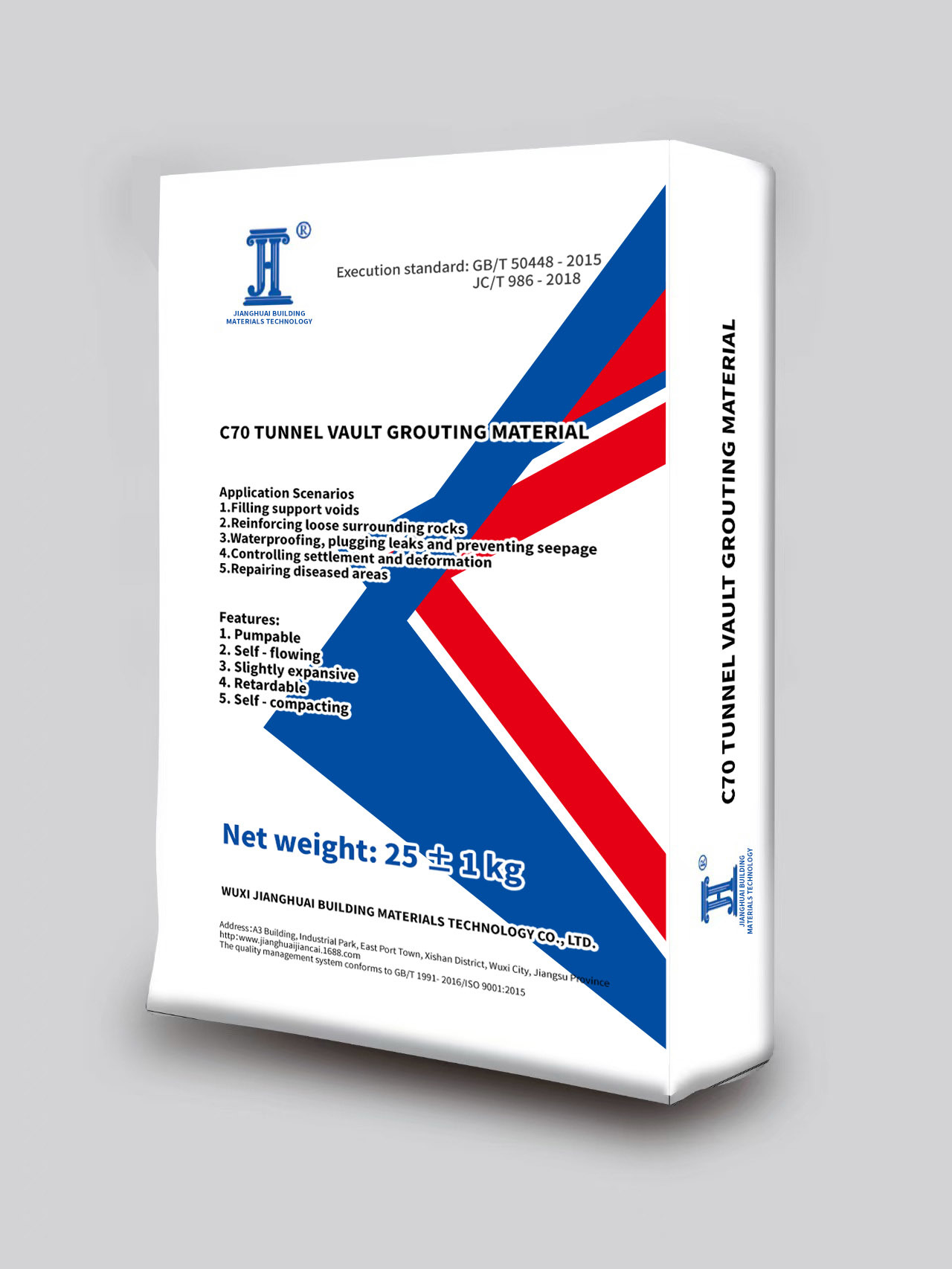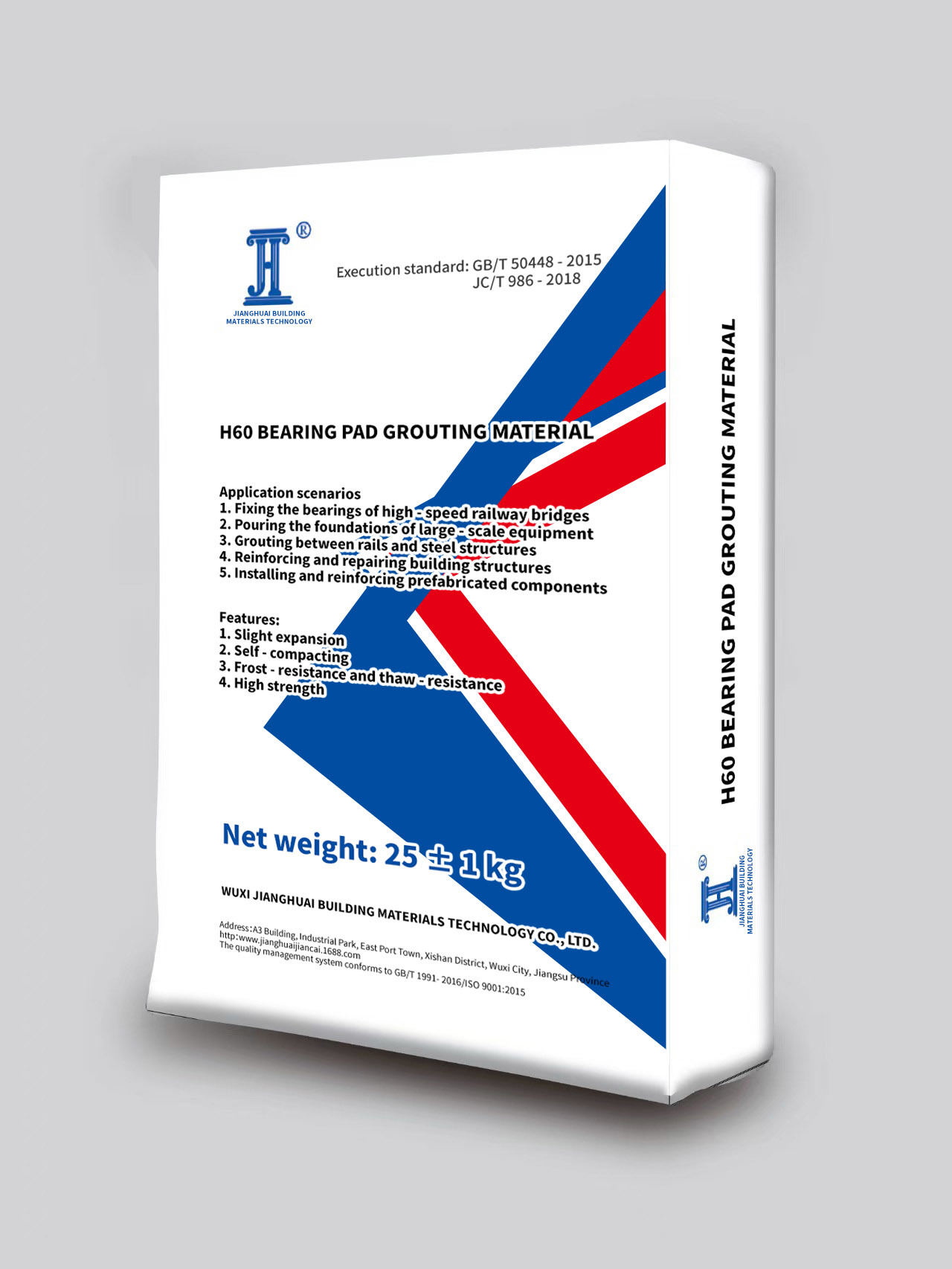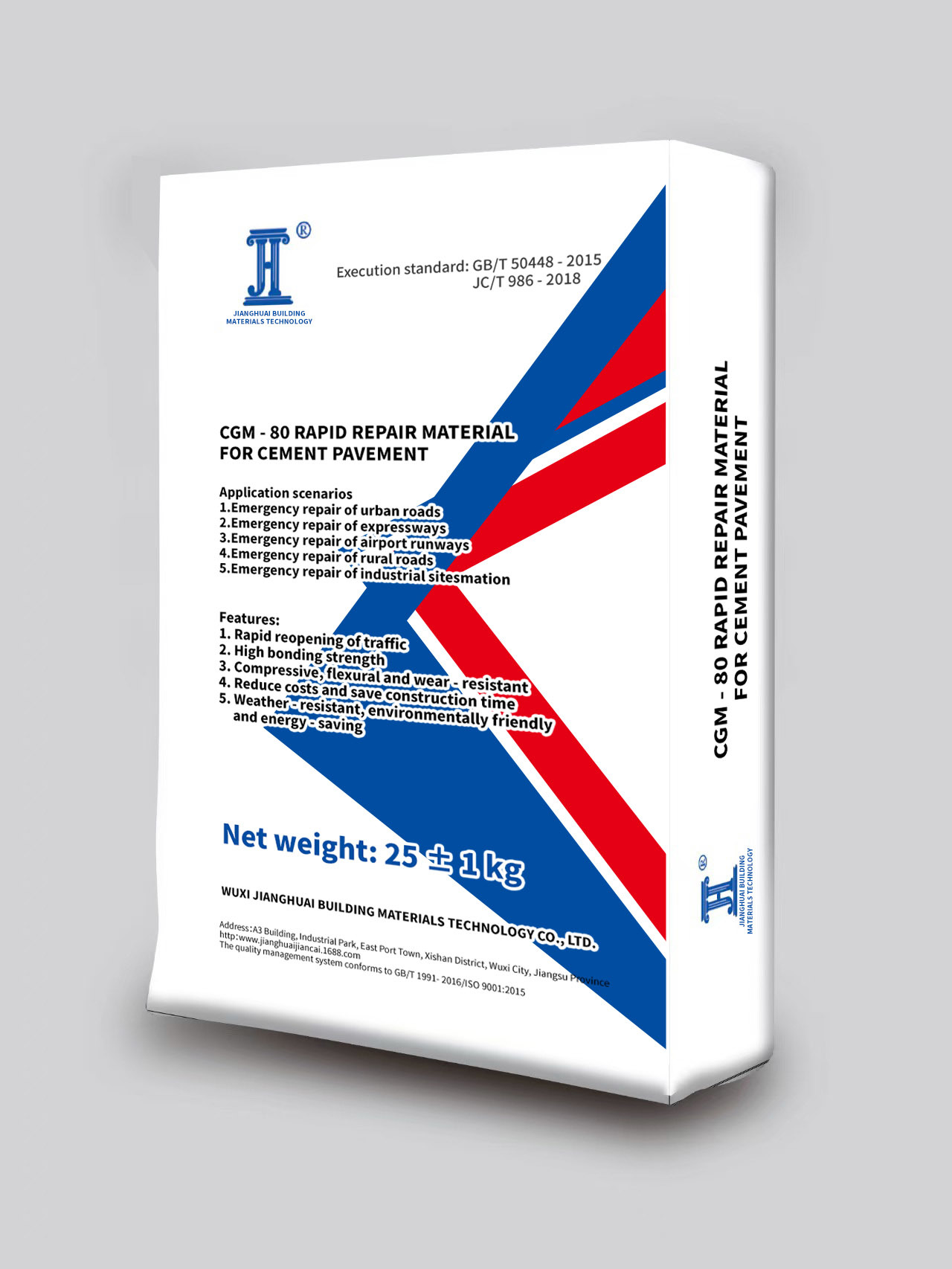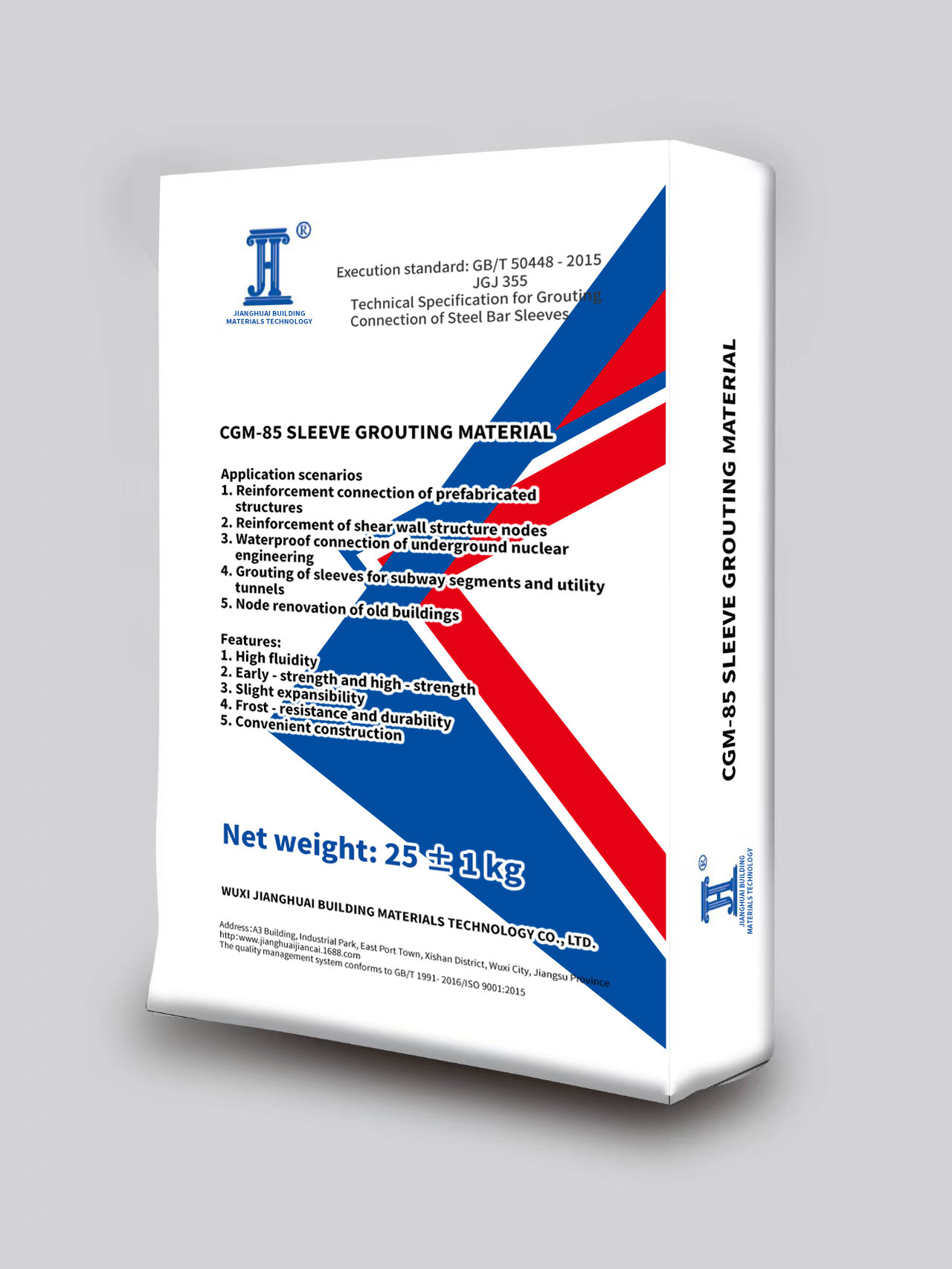PRODUCTS


Pre - stressed pipeline grouting material
Main business:Building, infrastructure, industrial, mining, marine engineering, military engineering, expressway, tunnel, bridge, concrete repair, installation of large-scale mechanical equipment, wind power equipment, foundation bolt fixing, etc. High-performance, early-strength, micro-expansion, self-compacting, large-flow leveling, rapid repair cement grouting material
- Commodity name: Pre - stressed pipeline grouting material
- Description
-
Application Scenarios Characteristics: 1. Bridge Construction Engineering 1. High Fluidity and Stability 2. Railway and Rail Transit 2. High Water-Retention and Long-Term Fluidity 3. Water Conservancy,Hydropower and Port Engineering 3. Excellent Volume Stability 4. Special Structures and Components 4. Excellent Impermeability and Durability 5. Strengthening,Reconstruction and Anti-seepage Engineering 5. Controllable Setting Time 6. High Strength and Good Toughness Performance Parameters
Homogeneity Requirements for Prestressed Duct Grouting Material
Serial Number Item Performance Index 1 Water Content (%) ≤1.0 2 Chloride Content (%) ≤0.06 3 Fineness (Residue on 0.080mm Square Hole Sieve) (%) ≤10.0 Slurry Performance Requirements for Prestressed Duct Grouting Material
Serial Number Item Performance Index 1 Setting Time (h) Initial Setting ≥5 Final Setting ≤24 2 Flowability (s) Initial ≤17.0 30 min ≤20.0 60 min ≤25.0 3 Free Bleeding Rate (%) 3h 0 24 h 0 4 Bleeding Rate between Wires (%) 3h 0 5 Bleeding Rate under Pressure (%) 0.22 MPa ≤1.0 0.36 MPa ≤2.0 6 Free Expansion Rate (%) 3h 0~1.0 24 h 0~2.0 ε3h/ε24h ≤1.0 7 Restricted Expansion Rate (%) 7d in Water 0.03~0.10 8 Flexural Strength (MPa) 7d ≥6.0 28 d ≥10.0 9 Compressive Strength (MPa) 7d ≥40.0 28 d ≥50.0, and not less than the design strength of prestressed concrete structures Product Introduction
Prestressed pipe grouting material (also known as prestressed duct grouting agent/grouting material) is a key material specifically designed for duct grouting in post-tensioned concrete structures. It replaces traditional neat cement slurry and, when mixed with cement in a specific proportion, forms a grouting slurry that meets high standards.
Core Function:
1. Protect prestressing tendons: Fill the ducts, isolating the prestressing tendons (steel strands, wire strands, etc.) from contact with air and moisture, preventing rust.
2. Transfer stress: Establish a strong bond between the prestressing tendons and the surrounding concrete to ensure that the prestress is effectively transferred to the concrete structure.
3. Dense filling: Ensure that the ducts are completely filled without voids, ensuring the integrity and durability of the structure.
I. Performance Characteristics (Key Differences from Ordinary Cement Slurry)
1. High Flowability and Stability:
● High flowability: High initial flowability (usually requiring a machine flowability of 10-18 seconds), capable of easily filling complex and slender ducts, ensuring smooth pouring.
● Excellent stability/water retention: The slurry is uniform and does not separate, with zero bleeding (almost no free water is produced), preventing bleeding from forming voids at the top or leaving channels after water evaporation.
● Long-term flowability retention: Small flowability loss after 30min/60min (usually requiring flowability to remain within the specified range after 30min), ensuring stable slurry performance during construction to meet the needs of long-distance and long-time grouting.
2. Excellent Volumetric Stability:
● Micro-expansion: Moderate and controllable micro-expansion during setting and hardening, compensating for the chemical shrinkage, plastic shrinkage, and drying shrinkage of the slurry itself, ensuring dense filling of the ducts without shrinkage cracks or voids. This is key to ensuring protection and stress transfer.
● Low creep: The hardened slurry has small deformation under long-term stress, ensuring the long-term effectiveness of prestress.
3. High Strength and Good Toughness:
● High compressive strength: The hardened slurry must meet high compressive strength requirements (usually ≥35MPa at 7 days, ≥50MPa at 28 days) to ensure effective transfer of prestress and withstand local pressure.
● High flexural strength: Compared with ordinary cement slurry, it has higher flexural strength, indicating that it has certain toughness and stronger crack resistance.
● Good bond with concrete: It can form a strong bond with the concrete of the duct wall.
4. Excellent impermeability and durability:
● High density: The hardened slurry structure is dense, with very low permeability, effectively preventing water, chloride ions, oxygen and other corrosive media from penetrating, protecting the prestressing tendons from corrosion.
● Freeze-thaw resistance: When used in cold regions, it needs to have good freeze-thaw cycle resistance.
● Chemical corrosion resistance: It has a certain resistance to common salts, weak acids and weak bases in the environment.
5. Filling property:
● It can completely fill all corners of the conduit without leaving any gaps or bubbles. It is often tested by "filling degree test".
6. Suitable setting time:
● The initial and final setting times must meet the construction process requirements, ensuring sufficient time for mixing, transportation and grouting operations, while hardening can quickly reach strength.
7. Environmental protection:
● Modern high-quality grouting materials usually do not contain harmful components such as chlorides and are environmentally friendly.
II. Main application scenarios
Prestressed pipe grouting materials are specifically used for pressure grouting of prestressing tendon conduits in all concrete structures using post-tensioned bonded prestressing technology. Typical applications include:
1. Bridge engineering:
● Longitudinal and transverse prestressed conduits of beams (T-beams, box girders, I-beams, etc.).
● Prestressed conduits of bridge decks and diaphragms.
● Anchoring area prestressed conduits of cable-stayed bridges and suspension bridges.
● This is the most widely used and demanding field.
2. Building engineering:
● Prestressed beams and slabs of large-span, large-space floors and roofs (such as stadiums, exhibition centers, airport terminals, etc.).
● Transfer layer beams of high-rise buildings. "Large foundation slabs (such as nuclear power plant raft foundations).
● Prestressed tendon conduits in shear walls or core walls that need to resist lateral forces.
3. Railway and rail transit:
● Prestressed concrete sleepers and track slabs of high-speed railways, dedicated passenger lines, subways and light rails (such as CRTSI, 11, III type slabs).
● Prestressed components of railway bridges. · Prestressed structures of large-scale transportation hubs such as stations.
4. Water conservancy and hydropower and port and harbor engineering:
● Prestressed anchoring in piers, water diversion tunnels and pressure pipes of dams.
● Prestressed components of hydraulic structures such as wharves, docks and breakwaters (special attention should be paid to the anti-chloride ion penetration performance).
5. Special structures and components:
● Nuclear power plant containment.
● Large storage tanks (such as LNG storage tanks).
● Tall structures such as TV towers and chimneys.
● Crane beams and roof trusses of large industrial plants (such as power plant main plants).
● Prestressed conduits at the joints of prefabricated segmental bridges.
6. Reinforcement and renovation projects:
● Grouting of newly constructed prestressed conduits when using post-tensioned technology to reinforce existing bridges, buildings and other structures.
Summary
High-quality prestressed pipe grouting materials, through their high fluidity, zero bleeding, micro-expansion, high strength, and high durability core performance, solve the fatal defects of traditional cement slurry in the grouting process, such as easy bleeding, shrinkage, incomplete filling, and poor protection effect. It is a key link to ensure the long-term safety, reliability, and durability of post-tensioned concrete structures, and is widely used in various major projects such as bridges, buildings, rail transit, and hydropower. It is crucial to select high-quality grouting materials that meet the requirements of standards (such as JT/T 946, GB/T 25182, TB/T 3192, etc.) and strictly follow the construction process.
Usage
Preparation
Before grouting, the surface of the base material in contact with the grouting material should be cleaned and cleaned. 24 hours before grouting, the surface of the base concrete should be fully moistened. 1 hour before grouting, remove the accumulated water.
Grouting material preparation
1. When mixing cement-based grouting materials, add water according to the water consumption specified in the product qualification certificate. Weigh the water first, then pour the grouting material into the water and stir.
2. Before grouting, select (but not limited to) the following equipment and instruments according to the characteristics of on-site grouting: mechanical stirring; forced concrete mixer; manual stirring; hand drill stirrer. The mixing time is 3-5 minutes, and the mixing location should be close to the grouting material location. If there are a lot of bubbles on the surface, let it stand for 3 minutes before pouring, or you can tap the formwork appropriately.
3. Grouting should be continuous, and the mixed grouting material should be used up within 30 minutes.
4. Vibration is strictly prohibited during grouting, appropriate insertion can be used, and the formwork can be tapped appropriately at the formwork.
Curing of grouting material
1. After grouting, the exposed parts should be sprayed with curing agent or covered with plastic film in time, and covered with wet grass bags to keep them moist.
2. When using plastic film to cover, the exposed surface of the grouting material should be covered tightly, and there should be condensation water inside the plastic film.
3. If the surface of the grout is inconvenient to water, a curing agent can be sprayed.
4. The water curing time should be no less than 7 days, and the number of times of watering should keep the grout material moist.
Instructions for Use
1. According to the weather forecast. Outdoor work should avoid rainy days, and if the working surface is rained on during the process, a rain cloth should be set up immediately; if rainwater is poured in, rework is required immediately.
2. The standard water consumption of this product is 0.12-0.14. The water-cement ratio is an important part of cement grout, and arbitrarily adding water will affect the product performance of cement grout.
3. Use a special mechanical forced rapid mixing for 3-4 minutes to prevent uneven mixing and the inclusion of unmixed materials, which will affect the later strength of the cement grout. Do not manually mix with a shovel on the ground.
4. Pay attention to temperature changes before construction, as temperature will affect the initial and final setting and fluidity of the cement grout. The suitable construction temperature is recommended to be 5-35℃. For low-temperature construction below zero, please inform our company in advance, as we have corresponding high-early-strength and freeze-thaw resistant products.
5. Mechanical vibration is strictly prohibited during construction, but channeling is allowed. This prevents the cement grout from layering and bleeding.
6. The dry density of cement grout is 2400KG/m³. According to the cubic meter of the project, the required amount should be calculated, and only the amount needed should be mixed! Do not mix a large amount that will not be used to avoid waste. The remaining material is strictly prohibited from being remixed into the grout for reuse.
7. It is strictly forbidden to arbitrarily add any chemical substances on site, which will change the product performance of the cement grout.
8. This product is strictly prohibited from being damp or rained on. It can only be reused after passing the quality inspection after the expiration date.
Factory Strength

Qualification
Message
Please provide the following valid information, and we will contact you as soon as possible.












